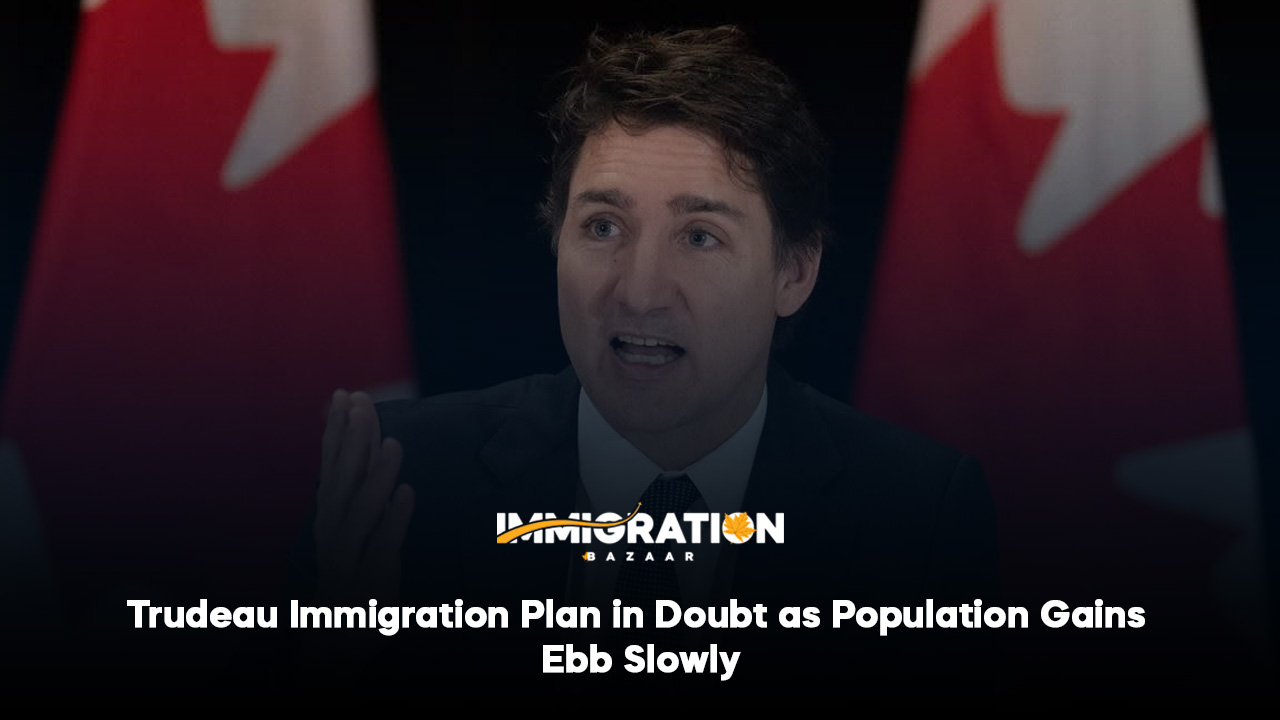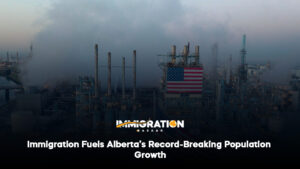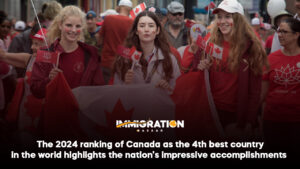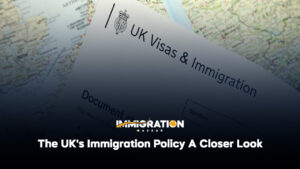Canada has long been recognized as a welcoming nation for immigrants, fostering a diverse society that contributes significantly to its economic and social fabric. Under Prime Minister Justin Trudeau’s administration, the country set ambitious immigration targets, with plans to admit over 500,000 immigrants annually to stimulate economic growth and address labor shortages. However, recent data suggests that population gains, which had previously surged due to high immigration levels, are beginning to slow. This decline raises concerns about the sustainability of Trudeau’s immigration strategy and its alignment with Canada’s economic goals.
-
Overview of Canada’s Immigration Landscape
Canada’s immigration policy has historically been designed to attract skilled workers, family members, and refugees to enhance the workforce and promote diversity. Trudeau’s government emphasized the importance of immigration in its economic strategy, aiming to:
- Drive Economic Growth: By bringing in skilled labor, the government sought to fill gaps in various sectors, especially in technology, healthcare, and trades.
- Address Labor Shortages: The aging population and declining birth rates have necessitated an influx of younger workers to sustain economic growth and maintain public services.
1.1 Trudeau’s Immigration Goals
Trudeau’s government set ambitious targets, intending to increase immigration levels to over 500,000 newcomers annually by 2025. This strategy was aimed at not only boosting the economy but also enhancing cultural diversity and addressing demographic challenges.
-
Current Immigration Statistics and Trends
Recent statistics indicate a notable shift in the immigration landscape. While Canada previously experienced record-high population gains due to increased immigration, recent trends show a slowdown.
2.1 Population Growth Rates
- Slowing Growth: According to data from Statistics Canada, population growth rates have declined from previous highs, leading to concerns about meeting the ambitious immigration targets set by the Trudeau administration.
- Comparative Data: In 2023, Canada welcomed approximately 500,000 immigrants; however, projections for 2024 suggest a potential decrease, leading to questions about the long-term sustainability of these growth rates.
2.2 Regional Disparities
- Urban vs. Rural Migration: Many immigrants gravitate towards major urban centers like Toronto and Vancouver, leading to challenges in housing and public services in these areas while rural communities continue to struggle with depopulation.
-
Economic Implications of Slowing Immigration
As immigration plays a crucial role in Canada’s economic strategy, the potential slowdown raises several concerns:
3.1 Labor Market Challenges
- Workforce Shortages: Certain sectors, such as healthcare and technology, are particularly vulnerable to workforce shortages if immigration levels decline. These sectors rely heavily on skilled foreign workers to meet demand.
- Economic Growth Stagnation: A decrease in population growth could slow economic expansion, as fewer workers may mean reduced productivity and innovation.
3.2 Social Services and Infrastructure
- Strain on Services: An influx of immigrants historically helps support social services; however, if population growth slows, funding for these services could face challenges.
- Urban Planning Issues: Cities that have welcomed large numbers of immigrants will need to consider infrastructure and housing demands to accommodate both current residents and newcomers.
-
Political Responses and Concerns
The slowing immigration growth has sparked discussions within the political landscape regarding the feasibility of Trudeau’s immigration plan:
4.1 Political Pressure
- Opposition Criticism: Opposition parties have criticized the government for failing to effectively manage immigration and population growth, raising concerns about the sustainability of Trudeau’s ambitious targets.
- Public Sentiment: As the public becomes more aware of potential challenges related to housing and service provision, support for high immigration targets may wane.
4.2 Government Adjustments
- Policy Reevaluation: In light of slowing growth, the government may need to reevaluate its immigration policies, considering adjustments to targets or pathways for immigration.
- Focus on Retention: Strategies to retain immigrants, such as enhancing job opportunities and integration programs, may gain importance.
-
Broader Economic and Social Context
To understand the implications of slowing immigration growth, it is essential to consider the broader economic and social context:
5.1 Economic Recovery Post-Pandemic
- Pandemic Impact: The COVID-19 pandemic significantly affected global migration patterns, leading to decreased immigration levels in many countries, including Canada.
- Recovery Efforts: As the economy recovers, maintaining immigration levels will be critical to filling labor gaps and driving economic growth.
5.2 Demographic Challenges
- Aging Population: Canada faces an aging population, with a significant proportion nearing retirement age. Slowing immigration could exacerbate labor shortages and limit economic productivity.
- Youth Engagement: Engaging younger generations in the labor force becomes essential, emphasizing the need for targeted immigration strategies.
-
Potential Solutions and Strategies
As concerns grow about the sustainability of Trudeau’s immigration plan, several potential solutions and strategies could address the challenges:
6.1 Enhancing Pathways for Immigration
- Streamlined Processes: Simplifying the immigration process for skilled workers and international students could attract more newcomers and facilitate their integration.
- Targeted Programs: Developing targeted immigration programs for sectors facing labor shortages, such as healthcare and technology, could help address specific workforce needs.
6.2 Community Support and Integration
- Integration Programs: Investing in community support programs for newcomers can enhance their integration and retention in Canada.
- Collaborative Efforts: Collaboration between federal, provincial, and municipal governments is essential to ensure that immigration policies align with local needs.
-
Conclusion and Future Outlook
As Canada navigates the complexities of immigration and population growth, the Trudeau administration faces significant challenges. The recent slowdown in population gains calls into question the feasibility of ambitious immigration targets aimed at stimulating economic growth.
Moving forward, it will be crucial for the government to assess and adapt its immigration policies to address labor market needs and demographic challenges. By enhancing pathways for immigration, focusing on community integration, and responding to public sentiment, Canada can work towards a sustainable and inclusive immigration strategy that meets the demands of its economy and society.







